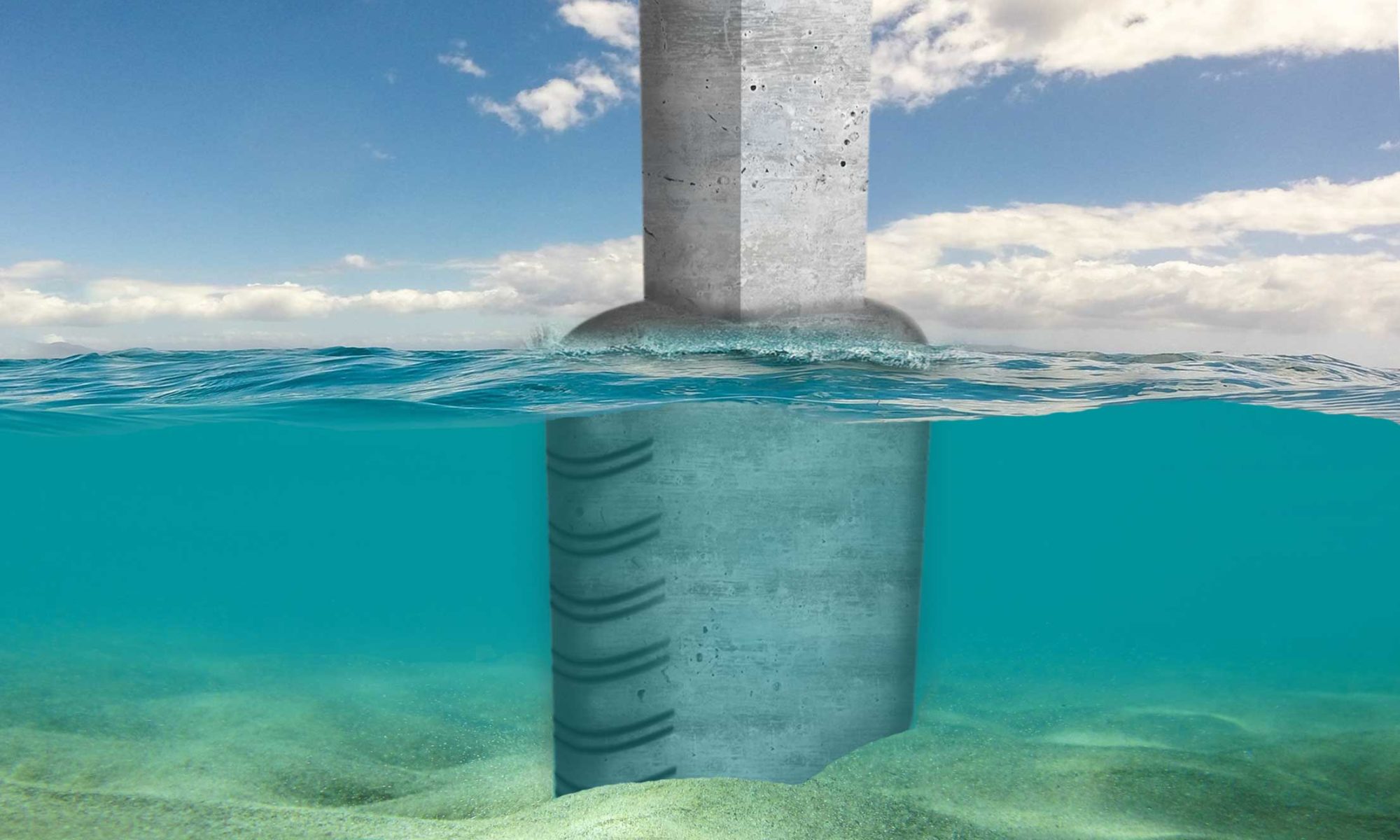Scour is the loss of bed and bank materials in water streams due to water flow; it is the main risk for bridges crossing waterways (in the US, 60% of bridge failures –at enormous cost– is due to this cause). (Fig. 1).
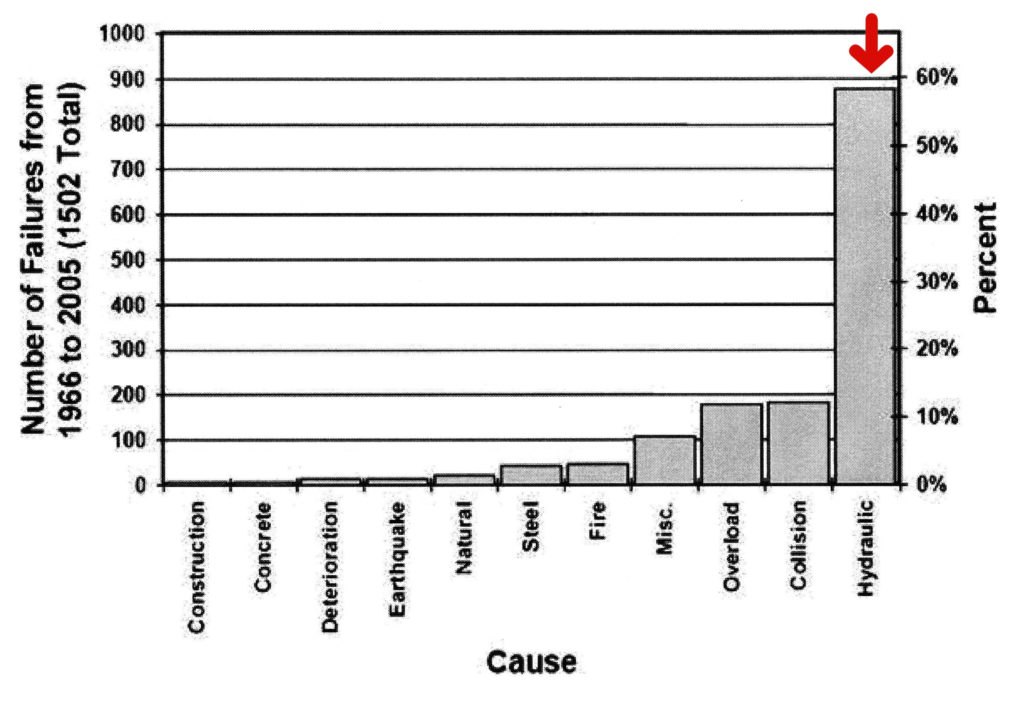
Local scour is the scour around structures situated in the water stream (such as bridge piers) and is the result of two mechanisms: the “horseshoe” vortex –at the upstream end of the structure– and the wake vortices, downstream; both are vortex systems (Fig. 2).
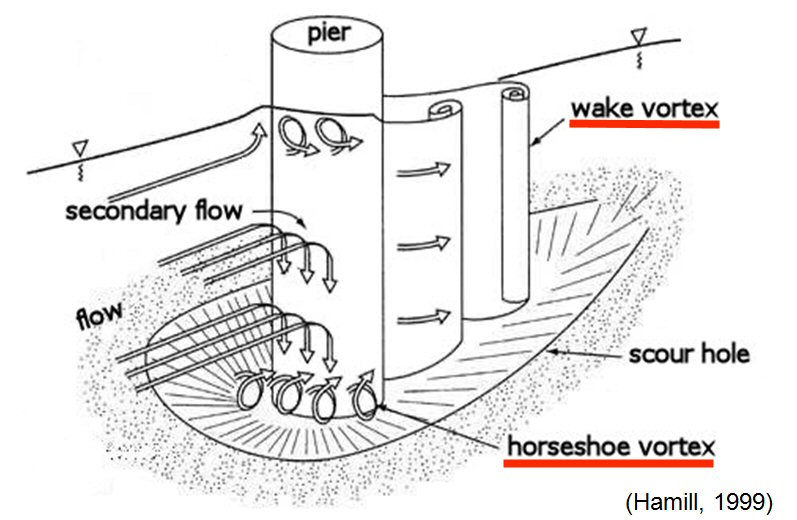
The wake vortices may travel along significant distances (Fig. 3) and exacerbate the local scour in structures located downstream of the pier that originally caused them; this is the wake vortex scour (Fig. 4).
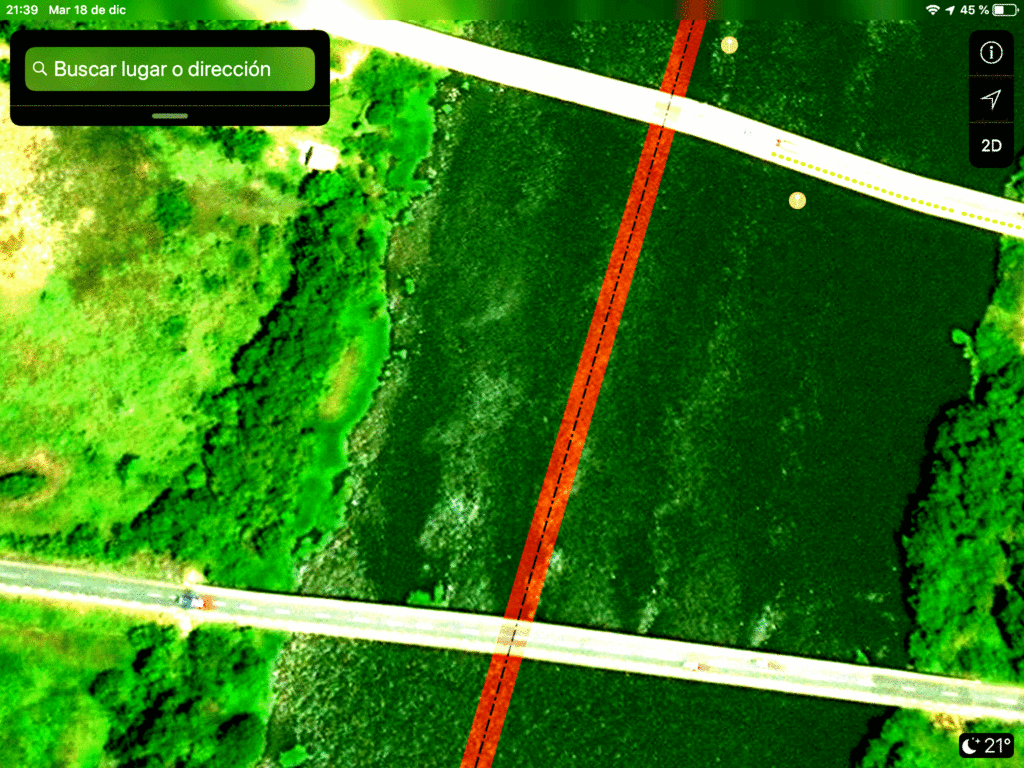
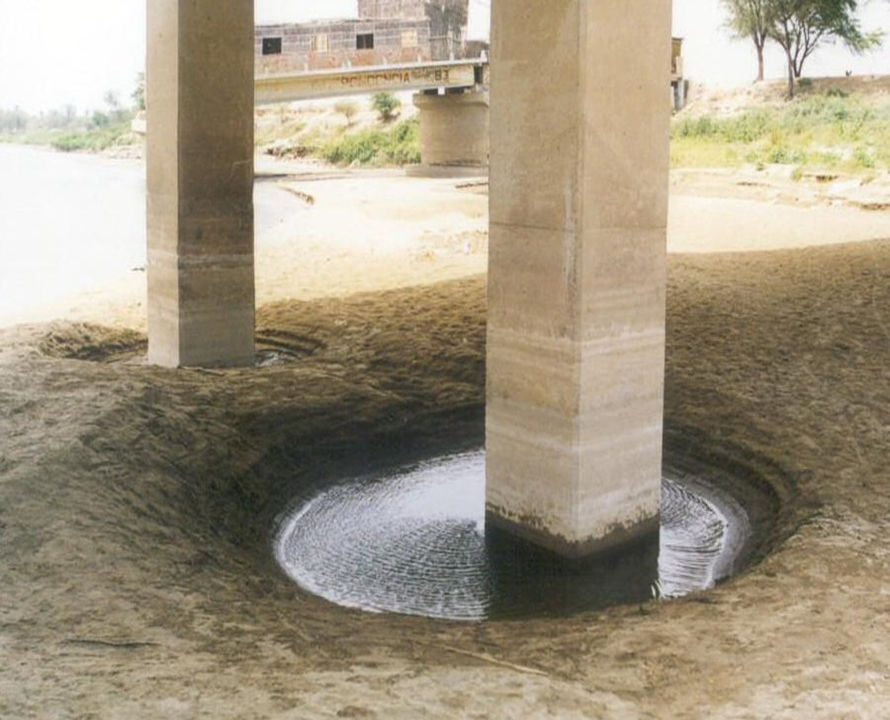
This phenomenon is hardly considered in the bridge hydraulics current technical design and maintenance.
Climate change and weather extremes, currently worse and more frequent than historically registered, are a critical threat to bridges crossing water streams and justify the conception and practice of new paradigms in scour countermeasures.
Climate-resilient, adaptive infrastructure is urgently needed.
